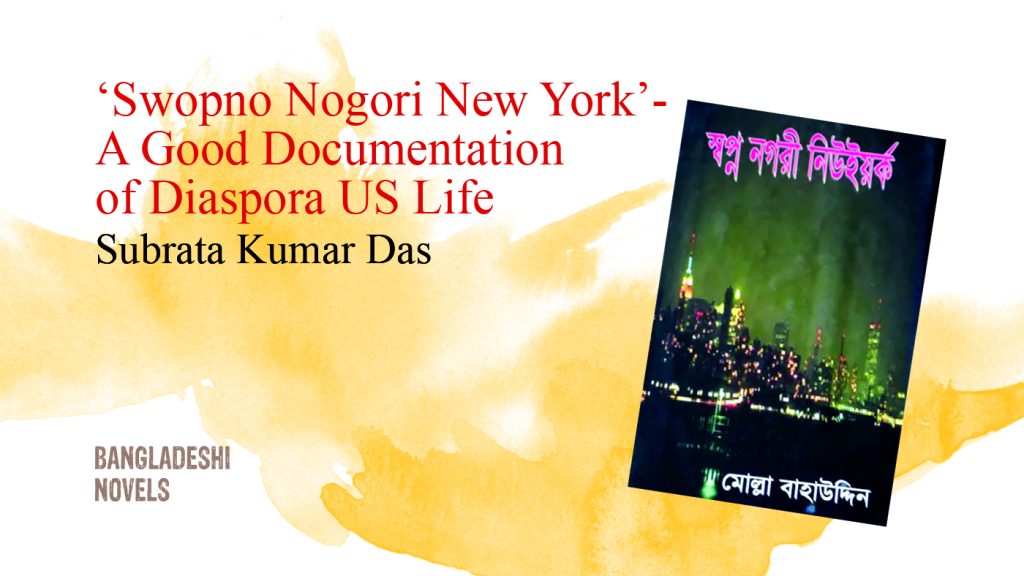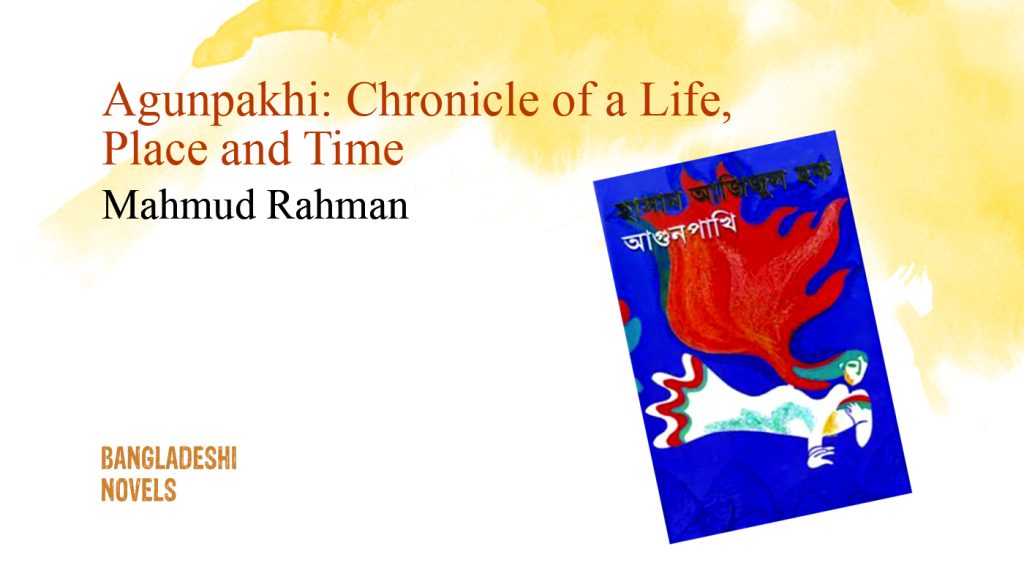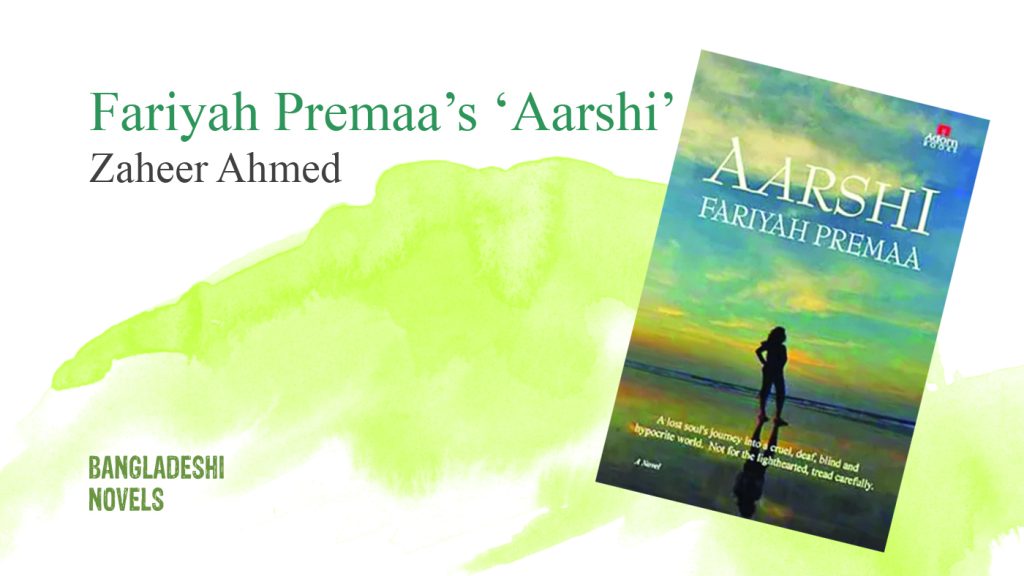
The number of translation of Bangla fiction in English has increased enormously in the present decades. English versions of the novels of Bankimchandra Chattopadhyay, Rabindranath Tagore, Saratchandra Chattopadhyay, Bibhutibushan Bandopadhyay are engulfing the book shops more and more. Even Titas Ekti Nadir Naam of Adwaita Mallabarman and some fictions of Jibanananda Das may draw a non-Bangalee reader to a newer zone. Translations of contemporary writers of West Bengal have also reached to a huge number of readership and been appreciated highly. In this regard a good many novels of Satyajit Roy, so me novels of Mahasweta Devi, the fatty volumes like Those Days, First Light and East-West by Sunil Gangopadhya, Dahan by Suchitra Bhattacharya are good examples. But the case of English translation in Bangladesh can not crate any hope. Only a few, among which Janani by Shawkat Osman from Penguin is the most noteworthy, have achieved the attention of the reading public of international arena. Selina Hossain’s Warp and Woof deserves the height to compel an international reader to evaluate about literature of Bangladesh in a more cautious way.
Selina Hossain (b. 1947) is one of major novelists of contemporary Bangla language. Some of her novels have already been translated into English. Warp and Woof is a worthy English version of her significant novel Tanaporen (1994).
Warp and Woof is a story of Abul Hashem, Rahanum and Sukhdwip. Or in other words it is about the coastal disasters and the suffering of people for it in Bangladesh. But surely it is more than all these outward things. The pangs and agonies of human life and different shades of it are the main facets of the novel.
The three main characters who are residing in the same family are Abul Hashem, now seventy-two, Rahanuma, now twenty six and Sukhdwip, now eight. Rahanuma addresses Abul Hashem as father and Sukhdwip calls Rahanuma as mother. But the fact is these three persons are not related at all in blood connection, though spiritually they are very near because ‘life’s like that – it’s bound by shackles of complex relationship’ (25). They came in touch with each other after a great tidal upsurge which snatched everything away from these three persons, changed their life and brought them closer. But it is crystal clear that all three of them had something called ‘past’. Abul Hashem had his wife Manimala, six children, his parents, siblings, relatives and everything. Rahanuma had her husband Jamal and newly born baby Gedu. Shukdwip also had something, but that has gone into oblivion because when he begins the new life he was only two.
The setting of Warp and Woof is Kuakata. A few years before in a drizzling Amabasya night the inconceivable disaster happened. The horrific night seemed like the Dooms-day to everyone; only death began to hover over everywhere. And then ‘the whole world vanished away at one icy touch’ (31). When Abul Hashem woke up he found two new persons – Rahanuma and Sukhdwip instead of all his previous things.
What would happen if they did not meet each other after that fatal event – may be they would have been insane. So Abul Hashem thinks that he had saved Rahanum and she had saved Sukhdwip and finally Shukdwip had saved both of them. They, three now belong to each other. But the sorry saga is human life never advances in the same way as is expected. Lusts and possibilities always try to make them selfish and self-centred. Individual fortune poses as a demolishing power of every human bondage. The junction of Abul Hashem, Rahanuma and Shukdwip meets no different fate – the debacle befalls after six years.
On the surface of the river Andharmanik, a char emerges. A new person, previously known to Abul Hashem, brings the news that the owner of the char is Abul Hashem. These two events – the emergence of the new char and the appearance of the new man smash the six years long tie between the seemingly inseparable persons. Abul Hashem and turn everything upside down. In a moment ‘Rahanuma’s face appears as worthless as the derelict trawler’ (75) to Abul Hashem. It seemed to him that he ‘can easily throw Sukhdwip into the sea, holding him by the legs’ (75). On the instant Rahanuma feels that the new char is the property of Abul Hashem in which she has no share, she begin to retreat inwardly from this fatherly person. The more she feels fascinated to Jabed Ali, the more she shoves up Shukdwip from her mind and last of all she takes the cruelest decision that ‘she is not Sukhdwip’s mother … and no Sukhdwip can be allowed to act as a wall’ (74) on her relation with Jabed Ali, the new man. In between these narrow attitudes Sukhdwip becomes an orphan – knowing everything from Rahanuma, Jabed Ali exposes the hollowness of their bond to Sukhdwip.
Warp and Woof is a story of a very complex well of human relationship. The story moves further: Sukhdwip leaves for Dhaka; Rahanuma marries Jabed Ali and at last they two are killed in an incident of grasping the char by other mighty people; Abul Hashem even dreams a woman again to marry, though fails to do it and last of all stands up as a man having nothing. But the truth that surpasses all the sufferings and pangs of life is that Abul Hashem is a man having a dream. The vision of a beautiful coloured fish, a symbolic expression of Abul Hashem’s aspiration, recurs in the novel time and again. Even when be loses everything he knows ‘no man can life without dreaming a dream’. Then again that coloured fish floats up and swims before his eyes. One may try to discover a semblance between Abul Hashem and Santiago of The Old Man And The Sea by Earnest Hemingway. But the presentation of this inevitable and indomitable human spirit takes a new colour in Selina Hossain’s chips. The English language of Amanullah Ahmed, Former chancellor of Rajshahi University and a veteran Professor of English acts as a prism to feel and understand the novel. Though a large volume of works does not credit to Prof. Amanullah Ahmed his few ones deserve acclimation – Warp and Woof is a major one among them.
Warp and Woof (A novel)
Selina Hossain
Translation : Amanullah Ahmed
Bangla Academy, Dhaka
Year 1999







